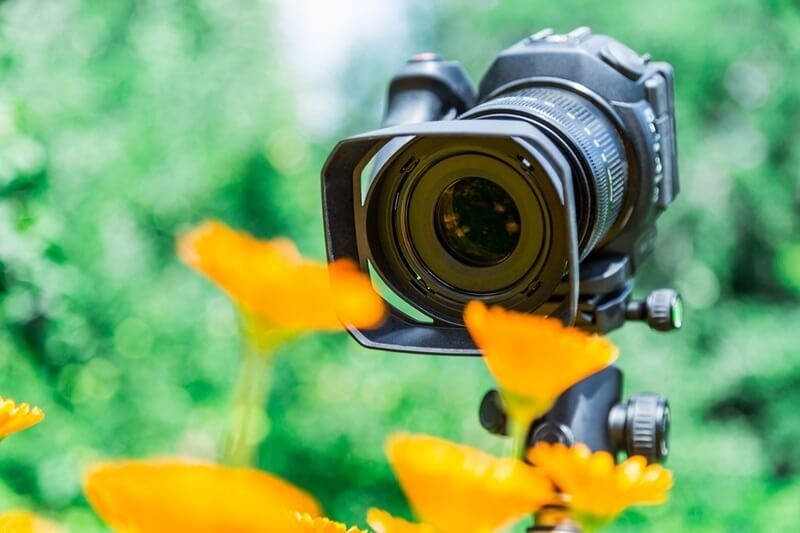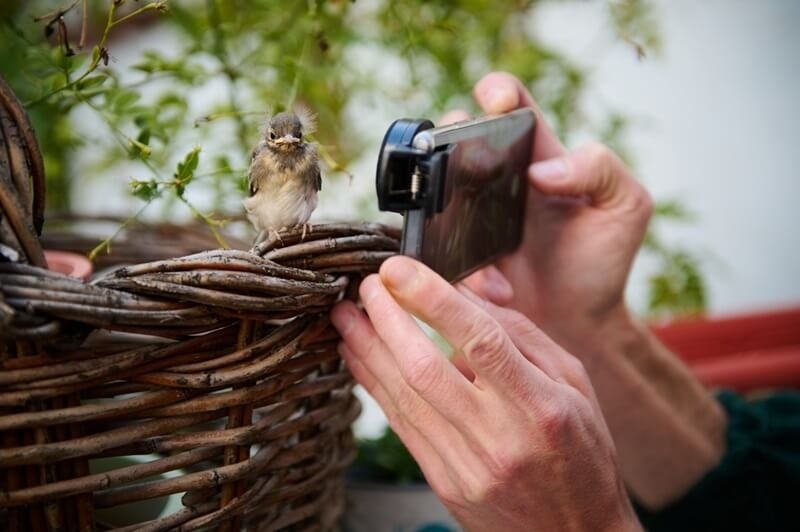
Ever zoomed in on something small — like the swirl inside a seashell or a raindrop balancing on a petal — and thought, wow, I wish I could capture that? That, right there, is the magic of macro photography. It’s not just about taking pictures up close; it’s about discovering entire little worlds that most people never notice.
The best part? You don’t need a fancy studio or a high-end setup. You just need patience, good light, and a curious eye. This guide walks you through everything — from picking your subject to lighting it right — so you can bring those tiny wonders to life, even if you’re holding a camera for the first time.

Let’s strip the jargon. Macro photography simply means shooting small subjects so close that they look larger than life in your photo. Think of it as a superpower — you’re showing people details they can’t normally see. The veins in a leaf. The shimmer on an insect’s wing. The fuzz on a peach.
Technically, macro means a 1:1 ratio — your subject appears life-size on your camera sensor. But forget the numbers for now. What matters is the perspective. When you lean in and see something small with fresh eyes, that’s when you’re doing it right.
You don’t need to travel to a rainforest to find inspiration. Start with what’s around you. A flower from your balcony, the texture on a coin, the steam swirling off your coffee mug.
Good close-up photo guide rule: keep it simple. Don’t cram too much into one frame. Pick one subject that feels alive — something with shape, texture, or light that catches your eye.
And don’t rush it. Move around, change your angle, crouch down if you have to. Macro photography is less about clicking and more about observing.
Here’s the truth: gear helps, but it’s not everything. A dedicated macro lens lets you focus really close and capture crisp detail, but if you don’t have one, there are options.
You can try clip-on lenses for your phone, extension tubes, or macro filters that attach to your regular lens. They all work surprisingly well for beginners.
If you’re thinking of upgrading later, go for something around 90mm or 100mm. It gives you room to work without getting too close — useful when your subject has wings or legs. Those are solid macro lens recommendations for anyone serious about exploring the small stuff.
Lighting is everything. Too much, and you wash out the textures. Too little, and everything looks dull. The sweet spot? Soft, natural light — like what you get early in the morning or right before sunset.
You don’t always need fancy gear for macro lighting. A piece of white paper can act as a reflector, or a tissue over a flashlight can diffuse harsh beams. The idea is to wrap your subject in gentle light so the details pop without glare.
Try experimenting with direction too. Light from the side brings out texture; light from behind gives a dreamy, glowing edge.
You’ll be surprised how much the slightest movement can ruin a macro shot. Even your heartbeat can blur the frame. Seriously.
If you can, use a tripod. If not, brace yourself — rest your camera on a railing, rock, or even your knees. Breathe out slowly before pressing the shutter. And if your camera has stabilization, turn it on.
Patience and stillness are everything in macro. Sometimes, you’ll wait minutes for the wind to pause or for a butterfly to settle. But when it does, it’s worth every second.
Autofocus can get confused in macro. It doesn’t always know what you want to highlight — the petal, the stem, or the background blur. That’s why manual focus gives you control.
Turn on live view and zoom in on your subject. Twist the focus ring gently until you see that sweet, sharp detail. It’s slow, but it’s almost meditative.
And if you want everything in focus (say, the whole flower), try focus stacking techniques — take several shots, each focusing on a slightly different part, and merge them later. It’s like stitching clarity together, one layer at a time.
Macro photography is all about controlling focus. The closer you get, the shallower your depth of field becomes. Sometimes only a single eyelash or pollen grain stays sharp — everything else fades away.
If you want more of your subject in focus, use a smaller aperture like f/11 or f/16. For dreamy backgrounds, go wide at f/2.8 or f/4. There’s no rule here — just mood.
Remember, every setting changes how the photo feels. Play around. The results will surprise you.
Insects are incredible subjects — detailed, colorful, and full of personality. But they’re also unpredictable. Move slowly, and don’t cast shadows on them. They’ll vanish before you even focus.
That’s why insects and textures photography isn’t about luck; it’s about observation. Watch how they move. Wait for them to pause. Capture the moment their wings shimmer or their antennae twitch.
And if bugs aren’t your thing, try textures. Bark, feathers, fabric, even rusted metal — they all tell visual stories when you get close enough.
Lighting up close can get tricky because your lens blocks light as you move nearer. You don’t need to buy a ring light immediately (though they’re handy). You can improvise.
A small LED panel, the flashlight on your phone, or even natural reflections from a nearby wall can work. The key is to experiment.
Strong side lighting brings out ridges and grooves; soft light smooths things out. Understanding macro lighting helps you shape emotion — it’s not just about exposure, it’s about atmosphere.
When you look at your shots later, don’t panic if they aren’t perfect. Macro photos often look flat straight out of the camera. A little editing goes a long way.
Adjust brightness and contrast gently. Boost the sharpness where it matters most, then tone down the background noise. If you’ve used focus stacking techniques, combine your images carefully to keep the details natural.
The goal isn’t to make it flawless — it’s to keep it real. Every tiny imperfection adds authenticity.
You won’t nail every shot. That’s okay. Macro is more about seeing differently than shooting perfectly.
Take your camera everywhere — the park, your backyard, even your kitchen counter. Photograph water droplets, fruit peels, or paper fibers. Every attempt trains your eye.
Follow a close-up photo guide, sure, but then break the rules a little. Try weird angles, shoot through glass, or use reflections. You’ll learn more by experimenting than by sticking to theory.
Macro is about patience, not perfection. You’ll take a hundred photos to get one that makes you say, “Yes, that’s it.” And that’s completely fine.
After a few weeks of practicing, something funny happens — you start noticing things you never did before. The symmetry in leaves. The way light bends through soap bubbles. The dust glinting on a windowpane.
You stop rushing, and you start looking. That’s the real reward of macro photography. Not the photos, but the perspective.
When you learn to slow down, observe, and appreciate detail, your work — and the world — starts to feel richer. That’s the secret every good macro lens recommendation quietly carries. It’s not just a lens — it’s a new way of seeing.
So go out there. Crouch, crawl, adjust, and click. The world is full of small miracles waiting to be found. You just need to get close enough.
This content was created by AI